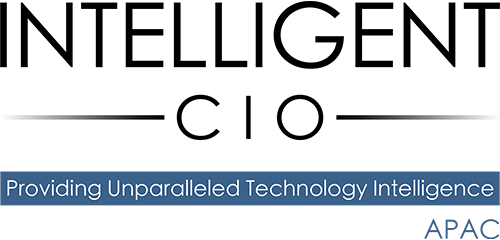Amol Vedak, Director, Intelligent Automation & BPM Business, Percipere, says achieving successful intelligent automation requires more than the implementation of the latest technology.
In an era of digital transformation, businesses increasingly turn to intelligent automation for more streamlined processes, enhanced efficiency and most importantly to accelerate innovation.
At the core of a successful automation initiative lies the enterprise resource planning (ERP) system. ERP systems are critical to businesses for streamlining processes, being the source of data for reporting, improving efficiencies and being at the epicentre of key business processes regardless of the supporting systems involved.
Modern ERP systems, enhanced by advancements in AI and ML, go beyond traditional data management, to actively enable intelligent automation. These systems support real-time decision-making, predictive analytics and advanced workflows that can be made responsive to dynamically changing business needs.
However, achieving successful intelligent automation requires more than the implementation of the latest technology, it demands leadership commitment and alignment between strategy, people and processes.
ERP systems play a pivotal role in ensuring that automation initiatives are scalable, compliant and aligned with business objectives. Companies that orchestrate ERP systems as the backbone of their automation strategies are better positioned to harness their full potential, unlocking operational excellence and competitive advantage.
ERP systems: a key enabler of end-to-end process automation and integration
Modern ERP systems are evolving beyond process automation to become critical enablers of IoT integration and cybersecurity frameworks. By serving as the central nervous system of an organisation, ERPs provide the data consolidation and real-time analytics essential for IoT ecosystems. Connected devices generate vast amounts of data that can inform operational decisions and ERPs act as the hub where this information is aggregated, processed and transformed into actionable insights. This convergence facilitates predictive maintenance, smarter supply chain management, and dynamic resource allocation.
In parallel, the rising reliance on IoT will result in new vulnerabilities coming to the surface. ERP systems now implicitly not only have to manage data but also actively prevent misuse. Advanced ERP cloud platforms have integrated cybersecurity tools, such as AI-powered threat detection and blockchain-enabled authentication, to mitigate risks across devices including IoT-connected devices. Organisations must prioritise ERP systems that emphasise robust cybersecurity measures, ensuring compliance with evolving data protection standards while safeguarding sensitive information.
ERP systems need to incorporate greater adaptability to manage increasingly complex business networks while leveraging advanced AI models.
The role of AI and ML in enhancing ERP driven automation
The infusion of AI and ML into ERP systems elevates their capabilities beyond traditional process management. AI-powered ERPs enable real-time decision-making by analysing vast amounts of data and identifying actionable insights. For example, predictive analytics powered by ML can anticipate future trends, such as demand fluctuations, enabling businesses to optimise inventory and allocate resources effectively. Similarly, AI algorithms can detect patterns in financial transactions, flagging anomalies that might indicate fraud or inefficiencies.
Moreover, machine learning enhances ERP systems adaptability by continuously refining automation workflows based on historical data and varying conditions. This self-learning feature makes automation resilient, allowing businesses to respond proactively to disruptions, such as supply chain delays or market shifts.
Overcoming ERP integration challenges
It’s important to note that integrating ERP systems with automation technologies can often present challenges. Legacy systems, for instance, may lack compatibility with modern platforms – which complicates integration. This can be addressed through middleware solutions, APIs or phased upgrades that maintain operational continuity while transitioning to more advanced systems.
Cultural resistance is another common hurdle, as employees may fear job displacement or disruption due to innovative tools such as AI, when the reality is that in most scenarios more agile and nimble competitive businesses will drive enterprises out of market due to better cost and value propositions.
Clear understanding of the ROI, communication about automation’s benefits and role in augmenting human effort and market differentiation is essential.
Additionally, organisations need to consider the costs of the integration, given the significant investment required and prioritise automation in high-impact areas, implementing solutions incrementally.
Best practices for aligned ERP implementation with automation goals
Companies must align ERP implementation with automation objectives in order to achieve successful digital transformation, otherwise they’ll get left behind. A clear definition of automation goals is the first step, as these objectives guide the ERP system’s configuration and integration. Whether the focus is on cost reduction, process efficiency or compliance, these targets provide a framework for designing systems that meet business needs effectively.
Cross-departmental collaboration ensures that ERP systems support cohesive workflows. Engaging stakeholders from all relevant areas of the business helps minimise the risk of misaligned processes and maximises the impact of automation. By fostering this cross-functional alignment, organisations can create a unified operational ecosystem where automation thrives.
Other vital considerations during ERP deployment include scalability and flexibility. A well-designed ERP system should adapt to the growth and evolution of business requirements, ensuring its long-term relevance.
Comprehensive training and change management are also critical. Employees must understand how to utilise ERP-driven automation and recognise its value in enhancing their work. To do this, providing clear communication and hands-on support is important, as it fosters user adoption and minimises resistance to new systems and processes. By addressing these challenges proactively, businesses can unlock the full potential of ERP-driven automation, ensuring that systems and business stakeholders operate with enhanced efficiency, resilience and innovation across the enterprise.


